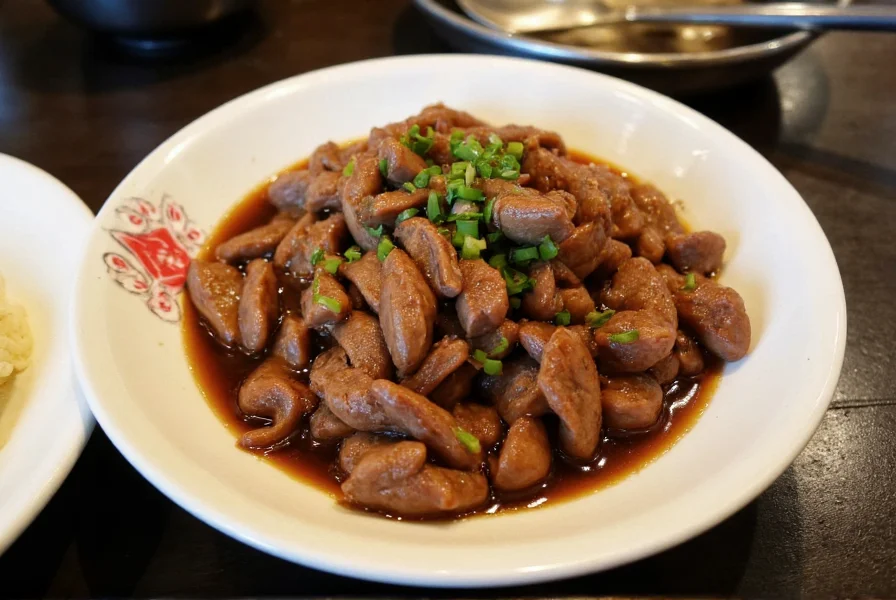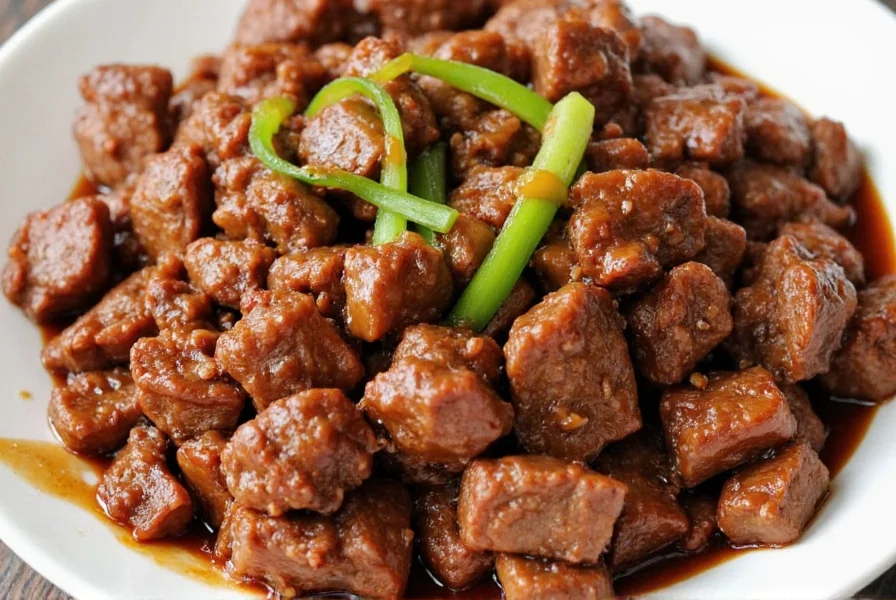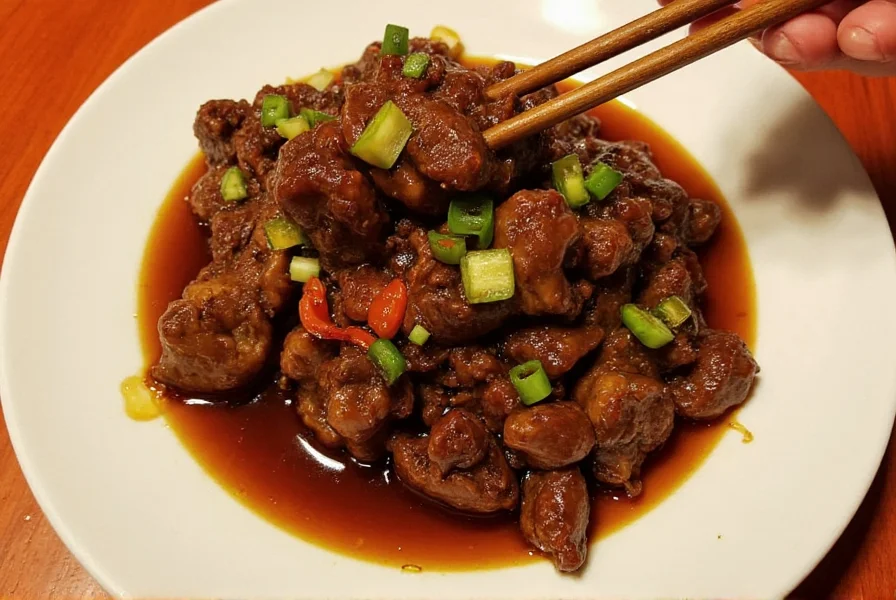When executed properly, ginger beef delivers a harmonious balance of flavors—spicy from fresh ginger, savory from quality soy sauce, and subtly sweet without overpowering the natural beef flavor. Unlike many Westernized Chinese dishes, authentic ginger beef shouldn't resemble a sugary glaze but rather a light, flavorful coating that enhances the premium beef cuts used in traditional preparation.
The Essential Ginger Beef Recipe Components
Creating restaurant-quality ginger beef at home requires attention to three critical elements: proper beef preparation, precise sauce formulation, and correct cooking technique. The magic happens in the velveting process, where thinly sliced beef receives a protective coating that locks in moisture during the high-heat stir-fry.
| Core Ingredient | Traditional Amount | Key Function |
|---|---|---|
| Flank steak or sirloin | 1.5 lbs (680g) | Lean cut that slices well for stir-fry |
| Fresh young ginger | 3 oz (85g), julienned | Provides bright, spicy flavor without bitterness |
| Shaoxing wine | 2 tbsp | Essential for authentic flavor depth |
| Light soy sauce | 3 tbsp | Savory base without excessive saltiness |
| Dark soy sauce | 1 tsp | For color and complex flavor |
Why Ingredient Quality Matters for Authentic Ginger Beef
The distinctive flavor profile of ginger beef hinges on using young ginger rather than mature ginger, which contains higher concentrations of gingerol—the compound responsible for ginger's characteristic heat and aroma. Young ginger has thinner skin, higher moisture content, and a more delicate flavor that won't overpower the beef.
For the beef selection, flank steak provides the ideal balance of marbling and texture when sliced properly against the grain. The velveting technique—marinating the beef in egg white, cornstarch, and rice wine—creates a protective barrier that prevents overcooking during the brief stir-fry process. This traditional Chinese cooking method transforms even moderately priced cuts into remarkably tender morsels.

Mastery of the Stir-Fry Technique
Professional results require precise temperature control during cooking. The wok must reach 400-450°F (204-232°C) before adding ingredients—a temperature range known as "oil smoking point" in Chinese cooking. At this heat level, the beef sears instantly without stewing in its own juices, preserving its delicate texture.
The sauce components should be pre-mixed and added in a specific sequence: first the aromatics (ginger and garlic), then the beef, followed by the sauce mixture. The entire cooking process from raw ingredients to plated dish should take no longer than 7-8 minutes to maintain optimal texture. Overcooking transforms tender beef into tough, chewy strips—a common mistake in home preparation of ginger beef stir fry.
Avoiding Common Ginger Beef Mistakes
Many home cooks make the critical error of adding cornstarch directly to the sauce rather than using it in the velveting marinade. This creates an unappealingly thick, gloppy texture rather than the light, glossy coating characteristic of authentic ginger beef.
Another frequent issue is overcrowding the wok, which causes the temperature to drop dramatically and results in steamed rather than seared beef. For best results, cook the beef in batches, ensuring each piece makes direct contact with the hot wok surface. The sizzling sound should be immediate and consistent throughout the cooking process.

Serving and Pairing Recommendations
Authentic ginger beef should be served immediately after cooking to preserve its ideal texture. The dish pairs beautifully with steamed jasmine rice, which absorbs the flavorful sauce without competing with the main ingredients. For a complete Chinese meal experience, serve alongside simple vegetable dishes like stir-fried bok choy or snow pea shoots.
When plating, arrange the beef strips in a mound with the ginger slices visibly distributed throughout—this visual presentation signals the prominence of ginger in the dish. The finished ginger beef should have a deep amber color from the proper balance of light and dark soy sauces, not the bright orange hue seen in many Westernized versions that rely on artificial coloring.
Frequently Asked Questions
What's the best cut of beef for ginger beef stir fry?
Flank steak is ideal for ginger beef due to its lean composition and grain structure that slices well for stir-fry. When properly sliced against the grain into thin strips (about 1/4 inch thick), flank steak delivers exceptional tenderness after velveting. Sirloin can be substituted but requires more careful slicing to avoid toughness.
How can I prevent my ginger beef from becoming tough?
Prevent toughness by properly velvetting the beef (marinating with egg white, cornstarch, and rice wine for 20-30 minutes), slicing against the grain, and cooking at extremely high heat for no more than 90 seconds per batch. Never overcrowd the wok, as this lowers the temperature and causes the beef to stew rather than sear.
Can I make authentic ginger beef without MSG?
Yes, authentic ginger beef traditionally doesn't require MSG. The depth of flavor comes from quality ingredients: fresh young ginger, proper soy sauce varieties (light for saltiness, dark for color), Shaoxing wine, and the natural umami from properly seared beef. A small amount of sugar balances the flavors without making the dish sweet.
What's the difference between ginger beef and ginger chicken?
While the cooking technique is similar, ginger beef requires more careful preparation due to beef's tougher texture. Beef needs velveting for tenderness, while chicken often doesn't. Ginger beef typically uses darker soy sauce for color contrast with the meat, whereas ginger chicken may use lighter sauces. The ginger quantity is often slightly higher in beef preparations to complement the stronger meat flavor.
How long should I marinate beef for ginger beef?
For optimal results, marinate the sliced beef for 20-30 minutes in the velvetting mixture (egg white, cornstarch, rice wine, and a pinch of baking soda). Longer marination (beyond 1 hour) can make the beef mushy due to the alkaline effect of baking soda. The cornstarch coating should remain intact when cooking begins.











 浙公网安备
33010002000092号
浙公网安备
33010002000092号 浙B2-20120091-4
浙B2-20120091-4